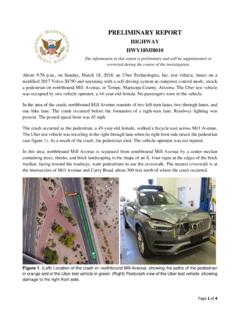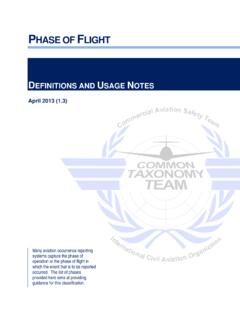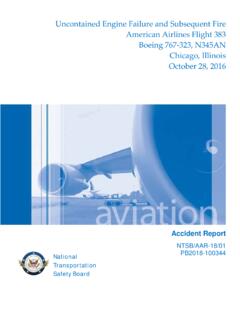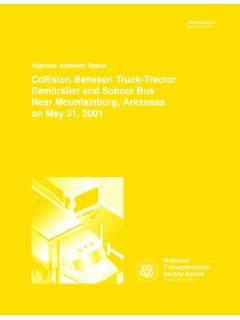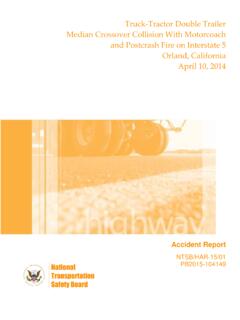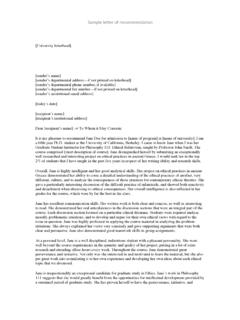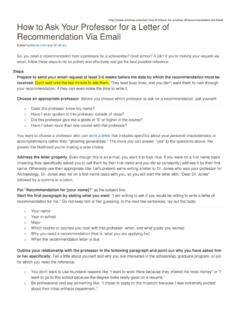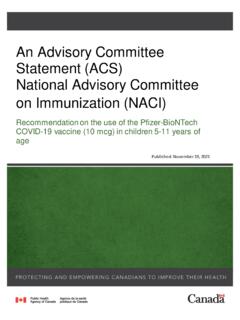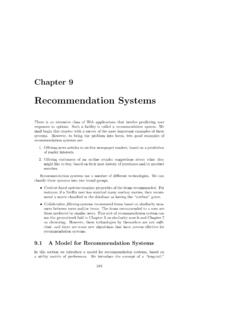Transcription of National Transportation Safety Board
1 59582 ASR-19-01 National Transportation Safety Board Washington, DC 20594 Safety Recommendation report Assumptions Used in the Safety Assessment Process and the Effects of Multiple Alerts and Indications on Pilot Performance Accident Number: DCA19RA017 / DCA19RA101 Operator: PT Lion Mentari Airlines / Ethiopian Airlines Aircraft: Boeing 737 MAX 8 / Boeing 737 MAX 8 Location: Java Sea, Indonesia / Ejere, Ethiopia Date: October 29, 2018 / March 10, 2019 The National Transportation Safety Board (NTSB) is providing the following information to urge the Federal Aviation Administration (FAA) to take action on the Safety recommendations in this report .
2 They are derived from our participation in the ongoing investigations of two fatal accidents under the provisions of Annex 13 of the International Civil Aviation Organization. As the accident investigation authority for the state of design and manufacture of the airplane in these accidents, the NTSB has been examining the US design certification process used to approve the original design of the Maneuvering Characteristics Augmentation System (MCAS) on the Boeing Company (Boeing) 737 MAX. We note that, since the PT Lion Mentari Airlines (Lion Air) accident on October 29, 2018, Boeing has developed an MCAS software update to provide additional layers of protection and is working on updated procedures and training.
3 However, we are concerned that the process used to evaluate the original design needs improvement because that process is still in use to certify current and future aircraft and system designs. Although the NTSB s work in this area is ongoing, based on preliminary information, we are concerned that the accident pilot responses to the unintended MCAS operation were not consistent with the underlying assumptions about pilot recognition and response that Boeing used, based on FA A guidance, for flight control system functional hazard assessments, including for MCAS.
4 As part of the 737 MAX We are making these recommendations to address assumptions about pilot recognition and response to failure conditions used during the design certification process as well as diagnostic tools to improve the prioritization and clarity of failure indications presented to pilots. 1 (a) We based our preliminary findings on information from the publicly released preliminary accident reports. (b) While Boeing uses the term uncommanded MCAS function in its assessment documents, in this report , we are using the term unintended MCAS operation as it relates to our review of the accident events.
5 2 Factual Information Accidents On October 29, 2018, Lion Air flight 610, a Boeing 737 MAX 8, PK-LQP, crashed in the Java Sea shortly after takeoff from Soekarno-Hatta International Airport, Jakarta, Indonesia. The flight crew had communicated with air traffic control and indicated that they were having flight control and altitude issues before the airplane disappeared from radar. The flight was a scheduled domestic flight from Jakarta to Depati Amir Airport, Pangkal Pinang City, Bangka Belitung Islands Province, Indonesia.
6 All 189 passengers and crew on Board died, and the airplane was destroyed. The National Transportation Safety Committee of Indonesia is leading the The airplane s digital flight data recorder (DFDR) recorded a difference between the left and right angle of attack (AOA) sensors that was present during the entire accident flight; the left AOA sensor was indicating about 20 higher than the right AOA sensor. During rotation, the left (captain s) stick shaker activated, and DFDR data showed that the left airspeed and altitude values disagreed with, and were lower than, the corresponding values from the right.
7 The first officer asked a controller to confirm the altitude of the airplane and later also asked the speed as shown on the controller radar display. After the flaps were fully retracted, a 10-second automatic aircraft nose-down (AND) stabilizer trim input occurred. After the automatic AND stabilizer trim input, the flight crew us ed the stabilizer trim switches (located on the outboard side of each control wheel) and applied aircraft nose-up (ANU) electric trim. According to DFDR data, about 5 seconds after the completion of the pilot trim input, another automatic AND stabilizer trim input occurred.
8 The crew applied ANU electric trim again. DFDR data then showed that the flaps were extended for almost 2 minutes. However, the flaps were then fully retracted, and automatic AND stabilizer trim inputs occurred more than 20 times over the next 6 minutes; the crew countered each input during this time using ANU electric trim. The last few automatic AND stabilizer trim inputs were not fully countered by the crew. During the preceding Lion Air flight on the accident airplane with a different flight crew, the DFDR recorded the same difference between left and right AOA of about 20 that continued until the end of the recording.
9 During rotation, the left control column stick shaker activated and continued for the entire flight, and DFDR data showed that the left airspeed and altitude values disagreed with, and were lower than, the corresponding values from the right. After the flaps were fully retracted, a 10-second automatic AND stabilizer trim input occurred, and the crew countered the input with an ANU electric trim input. After several automatic AND stabilizer trim inputs that were countered by pilot-commanded ANU electric trim inputs, the crew noticed that the airplane was automatically trimming AND.
10 The captain moved the stabilizer trim cutout (STAB TRIM CUTOUT) switches to He then moved them back to NORMAL, and the problem almost immediately reappeared. He moved the switches back to CUTOUT. He stated that the crew 2 Information in this section is taken from the preliminary report on this accident, which can be found at 3 Two STAB TRIM CUTOUT switches on the control stand can be used to stop the flight crew electric and autopilot trim inputs to the stabilizer trim actuator.



